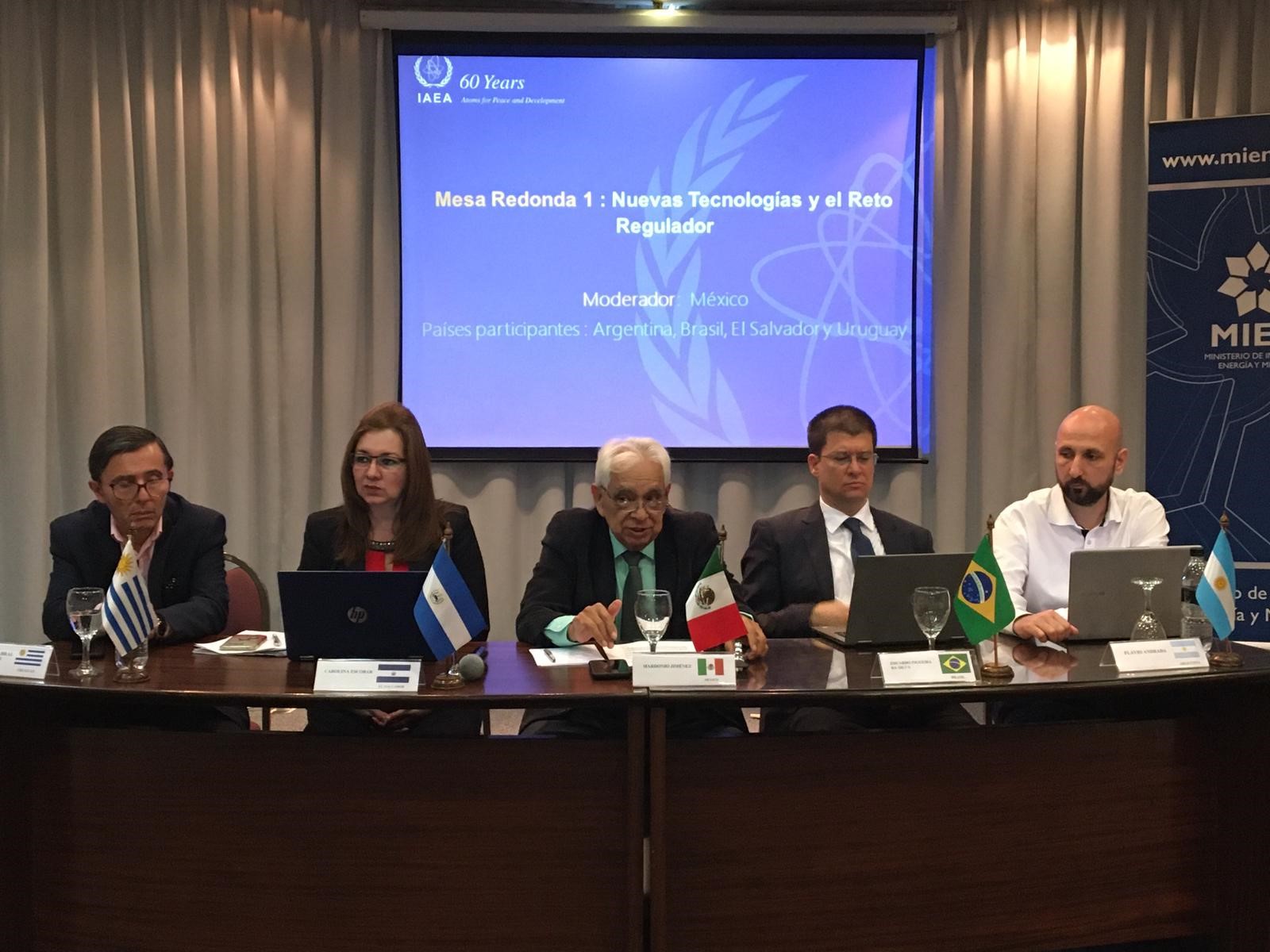Under an ongoing regional TC project[1], representatives of 15 Member State regulatory bodies in Latin America and the Caribbean and the Ibero-American Forum of Radiological and Nuclear Regulatory Agencies (FORO) met from 2 to 6 December in Montevideo, Uruguay, to identify and explore challenges they face in the execution of their responsibilities—from insufficient human resources to the implementation of new standards and procedures—in order to design more effective actions through the IAEA’s technical cooperation (TC) programme.
The uses of radiation sources in facilities and activities must be subject to the highest radiation and nuclear safety standards. Regulating safety is a national responsibility, but the IAEA works closely with its Member States to support the establishment of effective, independent, sustainable and appropriately-resourced national regulatory bodies.
Member State regulators attending the December meeting had an opportunity to identify and discuss regulatory challenges, both new and persisting. Each Member State provided an overview of their regulatory status, including specific details concerning the organizational structure of their regulatory body, the laws and regulations approved or under development, the human and financial resources available to carry out the established responsibilities, as well as the processes followed for the evaluation and authorization of facilities and activities.
“The progress achieved in the region in recent years has been significant: We can now say that all participating countries in the project have established a functional national regulatory body, albeit with different levels of development,” said Ronald Pacheco, Head of the IAEA’s Control of Radiation Sources Unit and Technical Officer of the newly-launched project.
Following the counterpart presentations , and after subsequent fruitful group discussions, the 15 meeting participants were able to identify the common, enduring challenges faced by their national regulatory bodies and to consider proposed regional actions to address persisting regulatory needs. These challenges included, among others, the introduction of new technologies, staff management and a need to strengthen integrated management systems for core regulatory functions.

